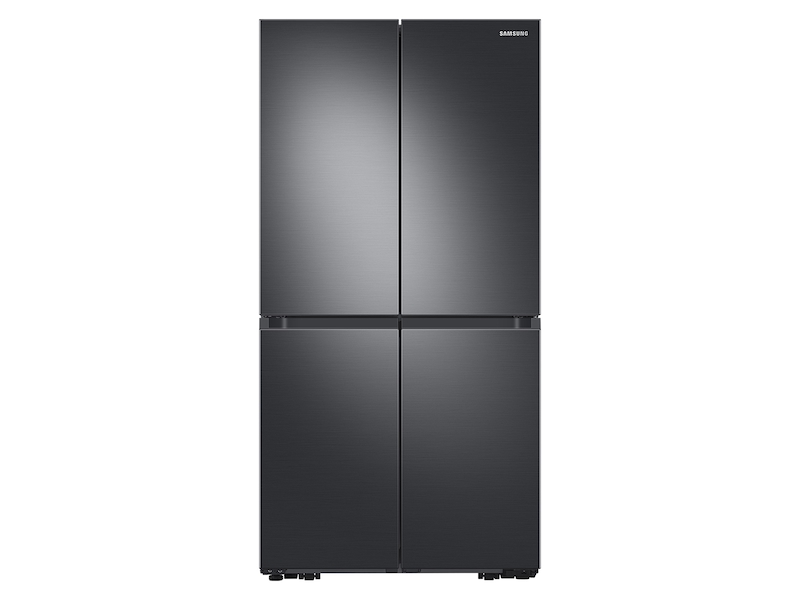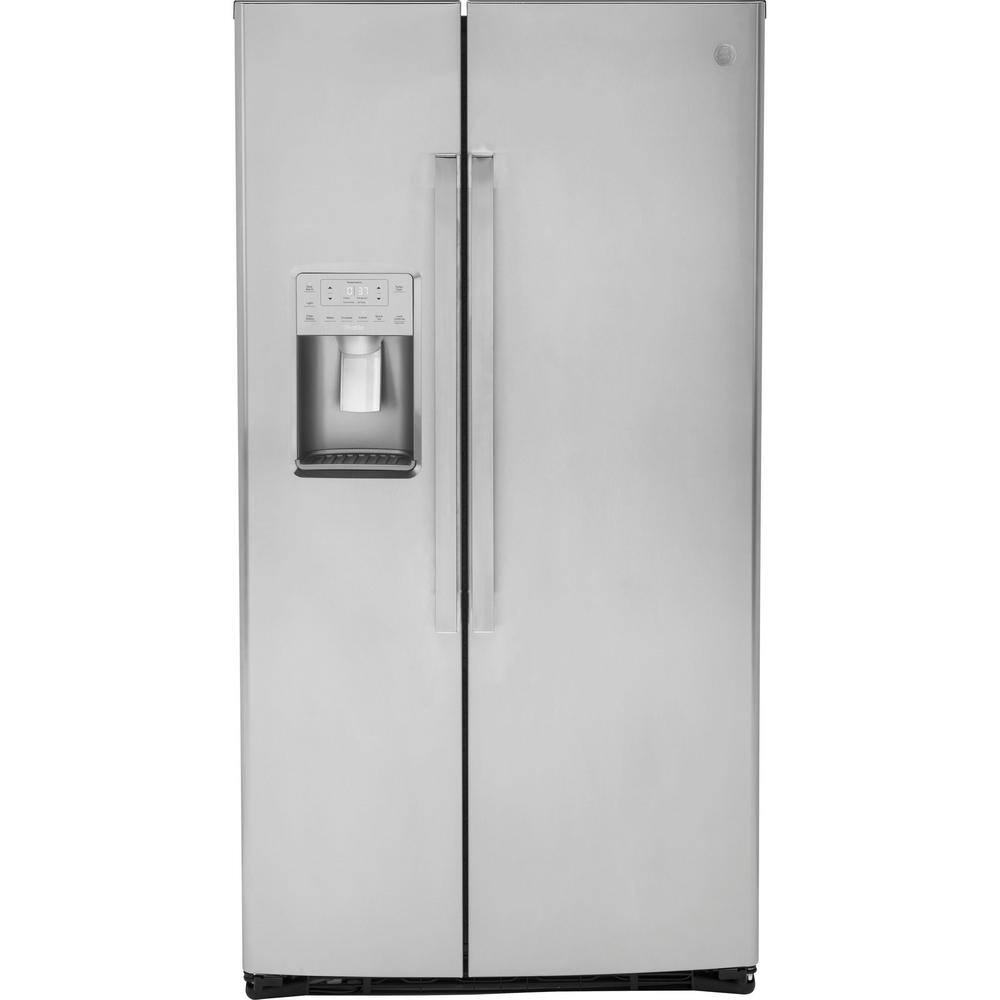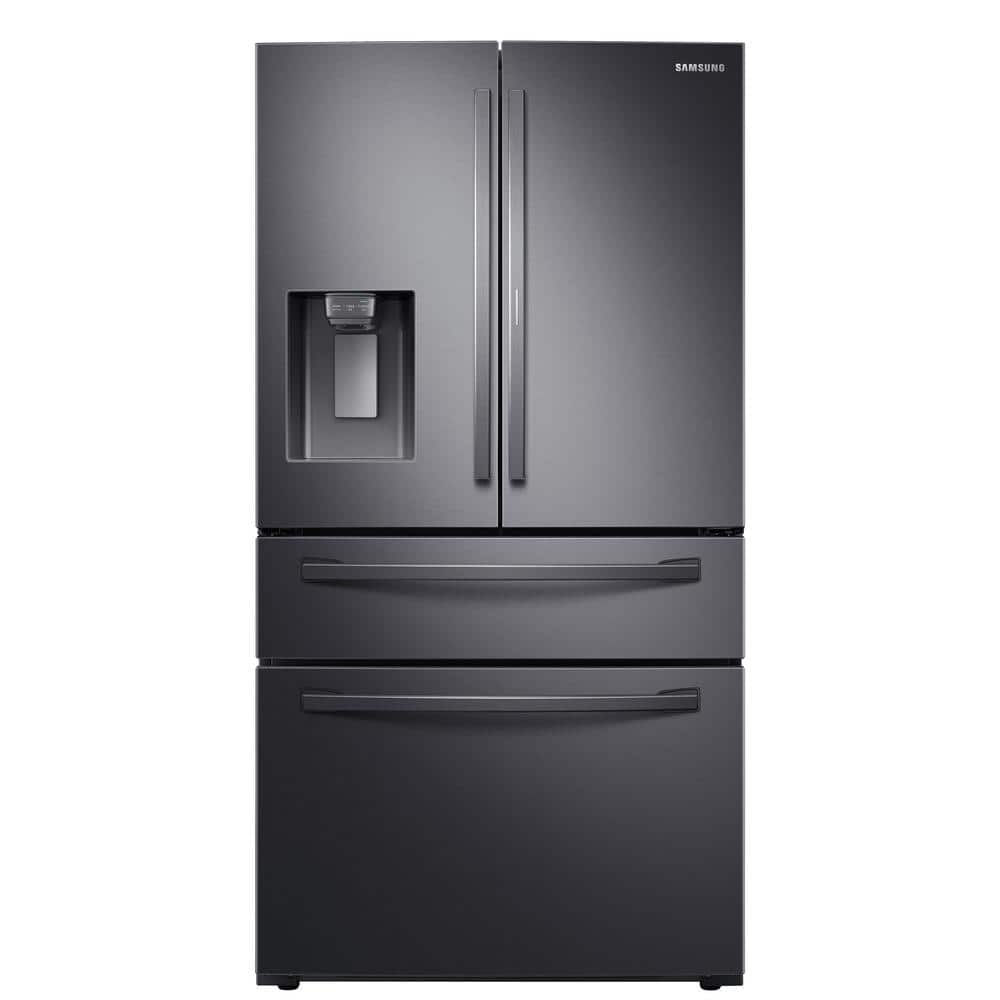LG Electronics 23 cu. ft. 3-Door French Door Refrigerator with Glide N’ Serve in PrintProof Stainless Steel, Counter Depth
Built-in look with counter depth and fingerprint resistant finish. Smart Cooling system designed to help keep food fresh. 10-year manufacturer’s limited warranty on linear compressor.
A lot of thought went into this LG refrigerator. On the outside, it’s counter-depth profile, contoured doors and hidden hinges provide a uniform and stylish look to your kitchen. And inside, an integrated 4-compartment crisper, deli storage center and recessed LED lighting. You get all this, plus our Smart Cooling technology, designed to help keep your food fresh.
- Get more space for groceries in a great feature-packed refrigerator. Nothing beats the convenience of having more food when you need it, and with a generous 23 cu. ft. of space, you’ll have room and room to grow
- Enjoy a built-in look with the counter depth feature on this LG refrigerator. Thanks to its slightly shallower depth, it can stand flush with your counter top for a sleek look
- Smart Cooling system is designed to maintain superior conditions within the refrigerator. The Linear Compressor reacts quickly to temperature fluctuations and helps keep your food fresher, longer. Meanwhile, strategically-placed vents in every section help to surround your food with cool air no matter where you put it
- Consistent temperatures are the key to food freshness. LG took its advanced freshness system 1-step further by adding Door Cooling+ to provide a steady supply of cold air to help keep door contents at peak freshness
- Multi-Air Flow System is designed to maintain superior humidity and temperature levels to help keep your food fresher, longer. Digital sensors constantly monitor conditions within the refrigerator and strategically-placed vents in every section to help surround your food with cool air no matter where you put it
- 2 humidity-controlled crisper drawers, a full-width Glide-N-Serve drawer, and a bonus drawer for fruits and vegetables make party preparations easy
- Your food isn’t the only thing that stays fresh. Only LG offers a 3-layer Fresh Air Filter with dedicated fan that pushes cleaner, fresher air into the fridge
- The Smart Pull Handle makes opening and closing the freezer quick and easy. All it takes is a simple lift of the handle for effortless access to your freezer
- SmartDiagnosis helps the service center diagnose problems over the phone, helping you troubleshoot quickly
- This ENERGY STAR qualified LG refrigerator exceeds federal energy standards to positively impact your energy bill, your energy consumption, and most importantly, the environment
- Now you can have all of the things you love about stainless, without the need for special cleaners or constant attention. LGs PrintProof fingerprint and smudge resistant finish easily wipes clean with a soft, dry cloth for a distinctive kitchen that handles real-life in style
Additional information
| Depth (Excluding Handles) | 28.75 |
|---|---|
| Depth (Including Handles) | 31.25 |
| Depth (Less Door) | 24.75 |
| Depth With Door Open 90 Degrees (In) | 43.5 |
| Height to Top of Door Hinge (in.) | 69.75 |
| Height to Top of Refrigerator (in.) | 68.38 |
| Product Depth x Height x Width (in.) | 31.25 x 69.75 x 35.75 |
| Refrigerator Width (In.) | 35.75 |
| Certifications and Listings | CSA Listed,Energy Star |
| Manufacturer Warranty | 1 Year Parts and Labor, 5 Years Sealed System Parts and Labor, 5 Year Compressor Parts and Labor and 6-10 Years Linear Compressor (Parts Only) |







by Vans
Really is print-free. Love it’s glide. The only thing I don’t like is the freezer capacity. It’s a little small in comparison to the refrigerator parts which are more than ample, especially when you use the dedicated ice cube box. Find the overall good value for the money.
by Martha
i love the lg…it’s much larger than what i had and i can reach it.
by Chris
It works well with very little noise.
by David
Very pleased. Excellent delivery experience.
by Boris
I filled this with food. It fits a surprisingly large amount. The door cooling is premium.
by Granny
Have had for just over 2 weeks. Has everything I wanted. No water dispenser taking up space on the outside or inside. Love the French doors as offers great use of our narrow kitchen. So much space inside, we can easily see everything with the counter depth. No hidden leftovers going bad anymore. Using the ice drawer for frozen veggies as we use bottled water. The print proof finish works extremely well. The operation is so quiet most of the time. Only hear some noise for a few seconds when the cooling system kicks in. I did get some vented freezer bins for the freezer drawer, as it seemed our frozen food was covering the vent holes. I did a lot of research and kept coming back to this model. One of my must haves is the smart cooling system. Old fridge had one thermostat. Always pay attention to that! Great design overall.
by Dan
Bought this product to replace my old fledge, the space is the most impressive comparing my old one. Its been working perfectly.
by Bobby
Works great! Just the right size for family of five.